Cloud computing is no longer an emerging buzzword. Businesses across the globe have already acknowledged the potential of this technology and are increasingly moving their workloads and applications to the cloud. Given the trends, it is sufficient to say that cloud computing and usage have become the new IT standard.
However, if you dig a little deeper, you’ll see a wide array of cloud and IT leaders expecting more specific cloud trends to come up in 2022. Here are some of the top key cloud trends that are expected to arrive with the New Year:
An Increase in Hybrid Cloud Environments
According to the Flexera 2020 Report, 93% of companies worldwide operate on a multi-cloud model, while the hybrid cloud approach is embraced by 87% of them. An increase in hybrid cloud deployment is expected due to the growth in the adoption of cloud-native infrastructure. Enterprises could make use of their cloud as well as on-premise resources with cloud-native computing and workloads gathering steam that is container-based.
In the future, the usage of the cloud must be driven by specialized circumstances and specific uses rather than one-size-fits-all or default settings. Kubernetes or other such orchestration platforms and containers or other cloud-native, cloud-centric technologies can be immensely helpful in making this process feasible.
Increased Automation in Hybrid Cloud & Multi-Cloud Settings
According to predictions made by Gartner, a minimum of 95% of the total security failures taking place in the cloud in 2020 will be caused by consumers. This, in itself, shows that automation is an integral part of voiding human error and creating multilayered defense mechanisms in cloud computing.
In addition, more and more enterprises today want to find better ways to manage multiple and complex on-premise, public, and private clouds from several vendors. Therefore, it has become an important issue pushing enterprises for large-scale adoption of hybrid multi-cloud strategies that offer higher levels of flexibility and resiliency in their choice of vendors. Enterprises also want to have the option of scalability, as well as support for a broad ecosystem of services and apps. Hence, automation is likely the next go-to strategy to deal with all the complexities.
Flexibility, Security, and Reliability in Cloud Strategies
The current trends show that more and more enterprises prioritize flexible, reliable, and secure cloud strategies for their business. According to a recent AllCloud report, 27.6% of respondents said security is essential for selecting cloud vendors. Additionally, 26.3% chose reliability, and 22.4% chose flexibility as the most important criterion.
While cost seemed to be an important criterion, in the beginning, this trend is changing now, and only 13.8% of respondents listed cost as a yardstick to choose vendors, making it the fourth important aspect in cloud strategies.
Consolidation of Cloud-Native Technologies
As cloud-native ecosystems become more mature, there are changes in the technologies and tools that are a part of this ecosystem. As a result, it is likely to see more consolidation in the future with dominant players in the field, solidifying their presence and leadership in the market.
Measurement and Monitoring Will Become a Priority for IT Leaders
With the expansion of hybrid and multi-cloud strategies, there is also a need for specialized IT teams to monitor diverse environments effectively and offer performance measurements. More workload is being deployed to cloud environments, giving rise to the need for having an IT team that constantly monitors and gathers metrics across the entire cloud environment. IT leaders will have to provide metrics to showcase a long-term business value offered by cloud spending.
5G-Enabled Edge Computing
Enterprises that regularly process huge amounts of data rely on the available resources of the cloud provider and the network bandwidth to complete the work at hand quickly. This is precisely where 5G-enabled computing can prove to be invaluable. This trend can help companies deliver broader bandwidth limits and higher speeds, enabling lower latency.
It is expected that 5G-enabled hybrid cloud ecosystems will take increased advantage of the available opportunities to perform edge computations and provide rapid data transfers to businesses worldwide.
Industry-Optimized Clouds
Industry-optimized clouds refer to a cloud computing system that addresses a particular industry’s specific needs and nuances. In 2022, industry-optimized clouds are expected to grow by leaps and bounds as organizations will not have to handle the complexities of their cloud architecture and infrastructure. This will go a long way to providing them with ease of administration and management.
Wrapping Up
2022 is shaping up to be the year of massive cloud computing. From businesses deploying multi-cloud strategies to embracing secure cloud solutions and advancement in encryption to protect their data, cloud computing technologies are likely to accelerate the process of digital transformation in organizations across the globe.
Recent Posts
February, 2022
The adoption of IoT (Internet of Things) has rapidly changed today’s business world. IoT predominantly helps to capture vast volumes of data from multiple sources. However, the processes of collecting, processing, and analyzing the tremendous flow of data from countless IoT devices have turned complex.
The data-driven nature of present-day businesses requires investments in innovative technologies that can turn this complex process into a simplified yet easily comprehensible one. This is the point where the convergence of IoT and Artificial Intelligence (AI) or AIoT can play a major role in redefining how businesses and economies work.
While IoT comprises devices interacting over the internet, the Machine Learning (ML) capabilities of AI make IoT devices learn from the data they collect. AI-enabled intelligent IoT devices can simulate smart human (at times, superhuman) behavior and decision-making patterns with little or no human interference.
The Rising Trend of IoT and AI Convergence
As a prominent part of their business processes, several businesses worldwide have already embraced the combination of IoT and AI. A 2019 survey reveals that respondents that heavily use AI in their IoT operations exceeded their value expectations. Similarly, a PwC 2019 IoT survey shows that 97% of the companies that have integrated IoT with other technologies such as AI and Blockchain were able to reap the benefits through this investment.
Start-ups and large enterprises alike prefer AI technology to bring out the full potential of IoT. The major leading providers of IoT platforms like Oracle, Amazon, and Microsoft have begun incorporating AI technology into their IoT applications already.
From robotics, self-driving cars and advanced analytics to Industry 4.0 Digital Twins and smart IoT devices, AI-powered IoT is increasingly becoming important across a range of business areas. As a matter of fact, the next evolutionary step for IoT is to embrace AI and drive intelligent automation and decision-making.
How the Blend of IoT and AI Works
At its heart, IoT is all about machines with sensors implanted. These machines, over internet connectivity, transmit streams of data. All IoT devices inevitably follow five basic steps. They are:
- Create
- Communicate
- Aggregate
- Analyze
- Act
The ‘Act’ step solely depends on the ‘Analysis’ step that immediately precedes it. Therefore, the efficiency of an IoT device is determined by its Analysis step. This is the point where AI technology portrays a significant role. While IoT devices provide a multitude of data, AI offers both creativity and context to make smart actions. Therefore, businesses can make smart decisions when an unlimited stream of data delivered by IoT devices is analyzed by AI technology.
Surprising Benefits of AI-Powered IoT
Combining two disruptive technologies like AI and IoT brings a broader range of benefits for both businesses and consumers alike. Some of the most popular benefits are as follows:
Enhanced Efficiency in Enterprise Operations
ML capabilities of AI can crunch huge volumes of data from IoT devices and detect patterns that can’t be done with simple computing devices. It can also predict the enterprise operation conditions and bring solutions for ideal outcomes. Therefore, redundant and time-consuming business tasks are eliminated.
An Efficient Risk Management System
AI-Powered IoT helps businesses analyze and predict a broader set of risks and automate timely responses. It ensures efficient handling of financial loss, employee safety, and cyber-attacks.
Brings Out Innovative Products And Services
A prominent AI technology like Natural Language Processing (NLP) is getting better at letting people communicate easily with computing devices. This leads to the creation of innovative products and services yet enhances the existing ones.
Enhanced Scalability
The AI-powered IoT ecosystem analyzes and crunches the data from devices ranging from smartphones to high-end computing devices to low-end sensors. This process can make large volumes of data handy and make it easier to share across a larger network of IoT devices.
Eliminates Unpredictable Yet Expensive Downtime
In some industrial sectors like offshore oil and gas, as well as industrial manufacturing, unpredictable equipment failures can bring expensive downtime. AI-enabled IoT allows you to predict equipment breakdowns and schedule timely maintenance procedures.
Generally, IoT combined with AI technology can lead the path towards an advanced level of business solutions and user experiences. To achieve greater value from your enterprise network and to transform your business, you should undeniably integrate AI with IoT devices.
Recent Posts
February, 2022
As a trending technology, AI has become a crucial part of various business organizations and industries. According to statistics, the global AI market value will likely reach $190.61 billion by 2025. This alone shows the immense reach of this technology throughout the globe. However, with the cloud, AI is setting the stage for higher efficiency, flexibility, and strategic insight for enterprises.
Often termed as AI Cloud or Cloud AI, it combines machine learning capabilities of artificial intelligence with already established cloud-based computing environments. In 2020, the Cloud AI Market was valued at $5.2 billion, which is expected to reach $13.1 billion by 2026. Moreover, Gartner predicts that by 2023, cloud-based AI will increase 5X from 2019, making AI one of the top cloud services.
With so much happening already in the AI Cloud space, let’s look at some of the major ways AI will influence the cloud landscape in the coming year.
AI Cloud Trends for Businesses to Look Out for in 2022
The Rise in AI-Powered Cloud Apps
- Cloud’s affordability will make it possible to democratize AI and enable businesses of all sizes to create supercomputer-powered apps.
Intelligent Virtual Assistants
- By leveraging AI in the cloud, virtual assistants will become better at deciphering human language.
- More businesses will use these automated chatbots for customer service conversations.
Artificial Intelligence Meets IoT: AIOT
- Since the cloud facilitates processing power and data bandwidth for machine learning models, IoT devices will leverage AI to become truly intelligent machines capable of intelligent decision-making.
AI-Driven Intelligent Automation
- More enterprises will utilize cloud-based AI/ML models for advanced automation and expand the scope of automation beyond handling individual process tasks.
AI for Improved Cloud Network Security
- With more enterprises moving their data to the cloud, cybersecurity between different IT environments has become more complex. With AI-enhanced cybersecurity solutions, businesses will be able to monitor and analyze data from multiple environments.
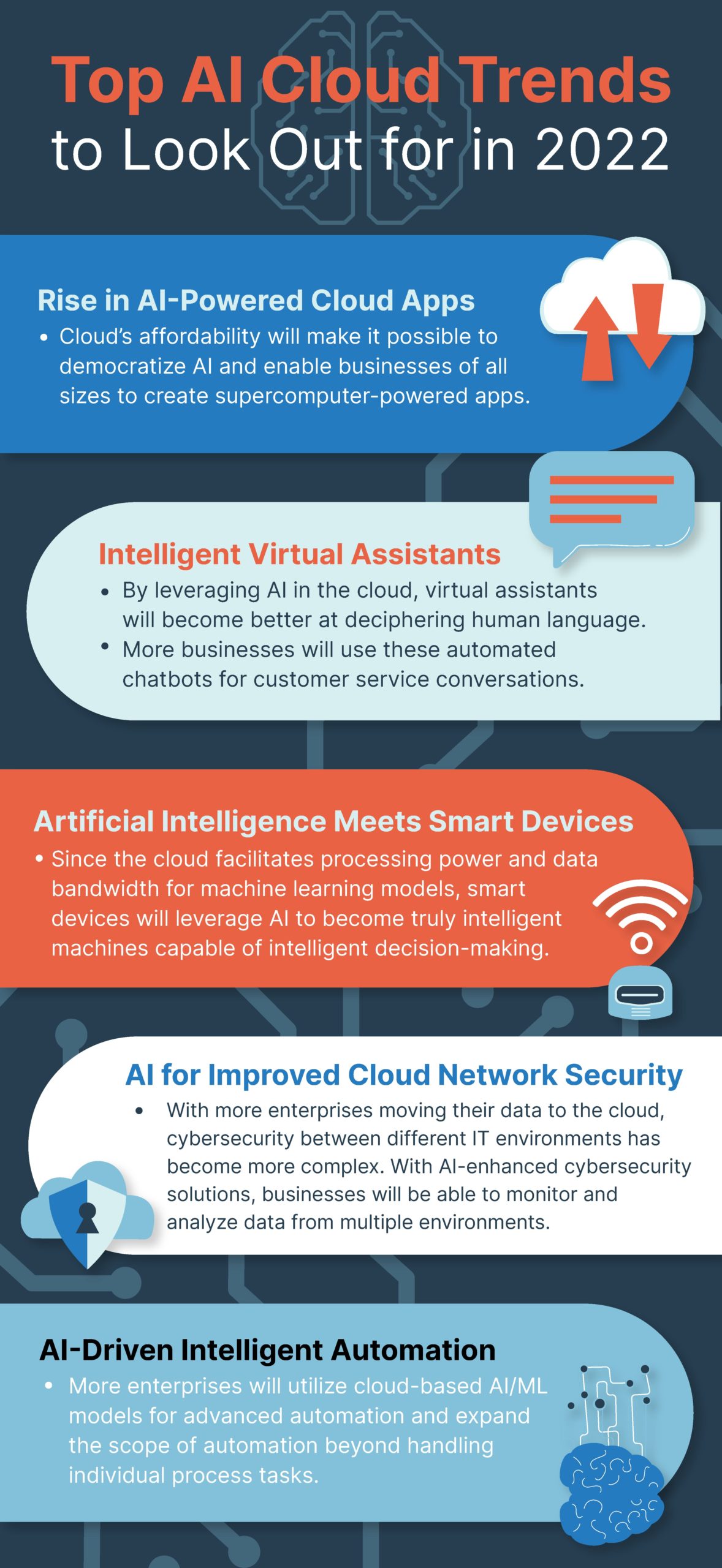
Takeaway
In 2022, AI is expected to continue transforming into the most transformative technology that has ever been developed by humanity. According to Google’s CEO, Sundar Pichai, its impact is expected to be greater than that of electricity or fire on the development of humankind.
Sources Used
https://www.semrush.com/blog/artificial-intelligence-stats/ https://www.mordorintelligence.com/industry-reports/cloud-ai-market https://www.gartner.com/smarterwithgartner/gartner-predicts-the-future-of-ai-technologies https://www.linkedin.com/pulse/future-trends-ai-analytics-cloud-bernard-marr/ https://www.monroyits.com/2020/03/12/how-were-expecting-artificial-intelligence-to-influence-cloud-computing-in-2020/
https://www.weforum.org/agenda/2021/03/ai-is-fusing-with-the-internet-of-things-to-create-new-technology-innovations/
https://www.datamation.com/security/artificial-intelligence-ai-in-cybersecurity-trends/ https://www.cnbc.com/2018/02/01/google-ceo-sundar-pichai-ai-is-more-important-than-fire-electricity.html
Recent Posts
February, 2022
Best Practices for Integrating ML in Your Enterprise
In the present times, Machine Learning (ML) models help solve a wide array of very specific business challenges faced by organizations across industries. Hence, it is important to choose an ML model that aligns with the problem you need to solve. Finally, the approach you choose to build your ML model must be productionable and easily executable for long-term results.
Check out this infographic that highlights the best practices that you can follow when integrating ML models with your business applications.
Best Machine Learning Practices for the Cloud
Cloud or On-Premise?
Choosing the cloud means saving time, easy scaling, and low entry costs. Moreover, there are big players such as Microsoft Azure providing services that allow for easy scaling.
Use Checkpoints
Having checkpoints after every training and evaluation stage using parameters and hyperparameters can help immensely.
Gather Historical Data from the Current Systems
Gathering already existing data can help you understand where optimization is necessary to give you the best results.
Create a Business Objective & Problem Statement
Having an objective or a problem statement helps prioritize. It is a metric that you can optimize and will show you progress.
Use Easily Attributable & Observable Metrics
Using simple metrics, in the beginning, is a great idea. While indirect effects offer great added value in the long run, it is better to start small.
Pass Sanity Checks Before Deploying The Final Model
Testing is the key before you deploy your machine learning model. You can even automate the process and check the generated metrics later to see if it gives you the expected results. Some standard metrics you can deploy are f1 score, accuracy, or recall.
Use Kubernetes & Containers in Deployment
Technologies such as Kubernetes and Docker help you encapsulate different parts of the system. That helps in making incremental improvements, and the scaling process becomes easier.


Takeaway
Deep Learning and Machine Learning have come a long way from being mere buzzwords. Today, they are an integral part of startups and businesses worldwide. Still, many organizations find ML integration to be challenging. However, following these best practices can help them take off in the right direction to eliminate the risks early in the production process.
Sources Used
https://towardsdatascience.com/mlops-practices-for-data-scientists-dbb01be45dd8
https://www.cio.com/article/3623353/best-practices-to-embrace-an-mlops-mindset.html
Recent Posts
February, 2022
Cloud services have certainly grown in the last several years however there are 3 main platforms that stand out amongst the crowd. There is a fierce three-way race between Amazon Web Services vs. Microsoft Azure vs. Google Cloud Platform (GCP). These have become the top cloud companies and have a commanding lead in the markets for Infrastructure as a Service (IaaS), and Platform as a Service (PaaS).
This Gartner magic quadrant shows the dominant position of AWS vs. Microsoft Azure vs. Google Cloud Platform. However, you should expect this graph to change significantly over the years as Alibaba Cloud, Oracle Cloud, and the IBM Cloud will innovate and keep up with the competition and evolve.
AWS has always dominated the cloud space. According to a 2020 report from Synergy Research Group, “Amazon growth continued to closely mirror overall market growth so it maintained its 33% share of the worldwide [cloud] market. Second ranked Microsoft again grew faster than the market and its market share has increased by almost three percentage points in the last four quarters, reaching 18%.”
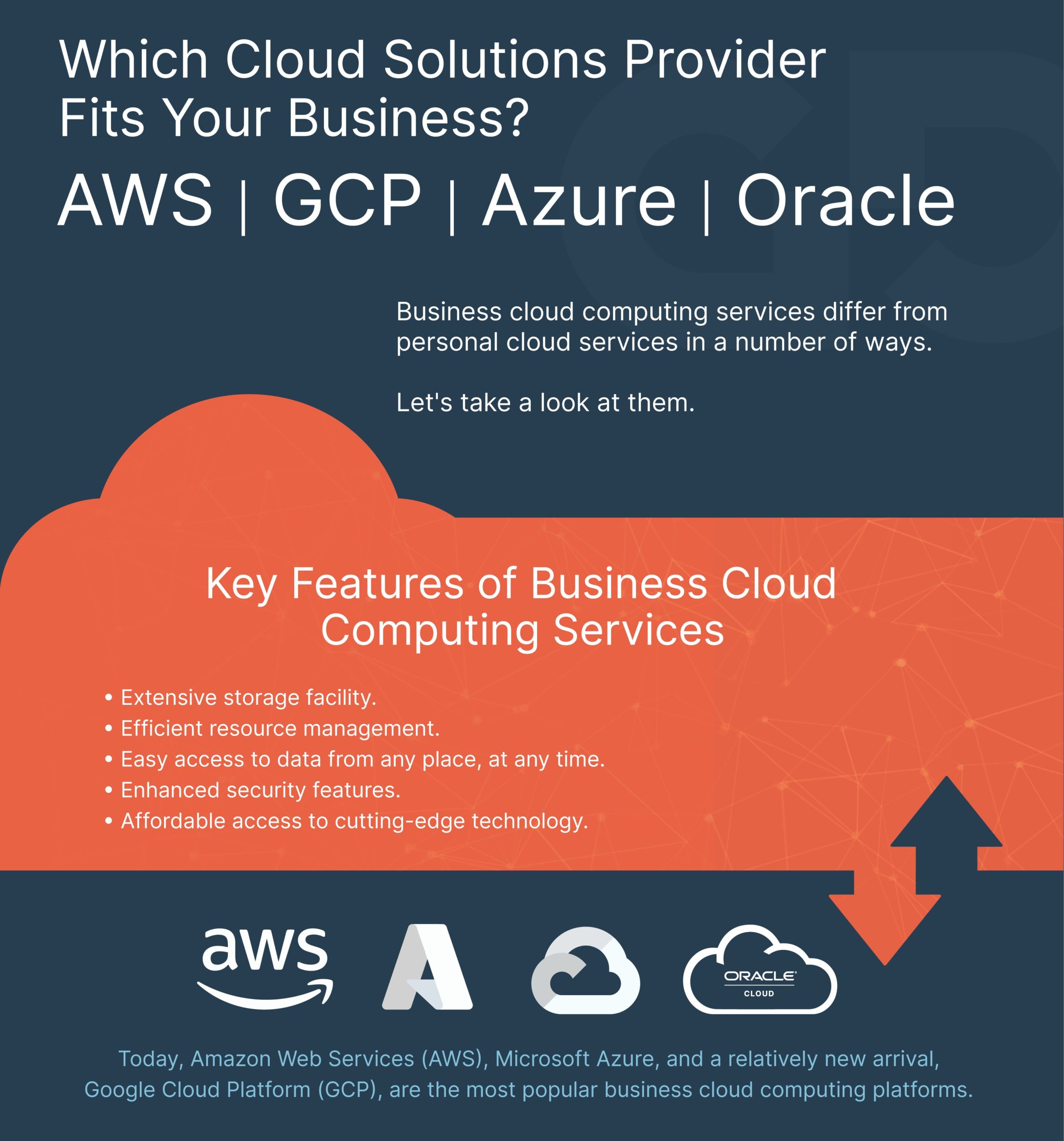

Meanwhile, Microsoft is particularly strong in SaaS, while Google Cloud, with its strength in artificial intelligence, is positioned for aggressive growth as the AI market grows – and is known for offering discounts.
Let’s take a closer look at the top cloud providers going into 2022.
AWS – Amazon Web Services
AWS being the first to offer true cloud services is the dominating provider. A subsidiary of Amazon and founded in 2006, AWS is a leader amongst cloud service providers. It is one of the first cloud computing platforms that became widely available. Amazon is an IaaS market leader, holding about 31% of the cloud market share. In 2020 the financial results for the entire year exceeded the company’s expectations. Some of this can be attributed to the massive need for cloud services as the pandemic took hold. AWS reported a revenue of $45 billion in 2020, which was almost 30% more than the revenue announced in 2019.
Amazon Web Services offers a broad set of global cloud-based products including compute, storage, databases, analytics, networking, mobile, developer tools, management tools, IoT, security and enterprise applications. These services help organizations move faster, lower IT costs, and scale. AWS is trusted by the largest enterprises and the hottest start-ups to power a wide variety of workloads including: web and mobile applications, game development, data processing and warehousing, storage, archive, and many others.
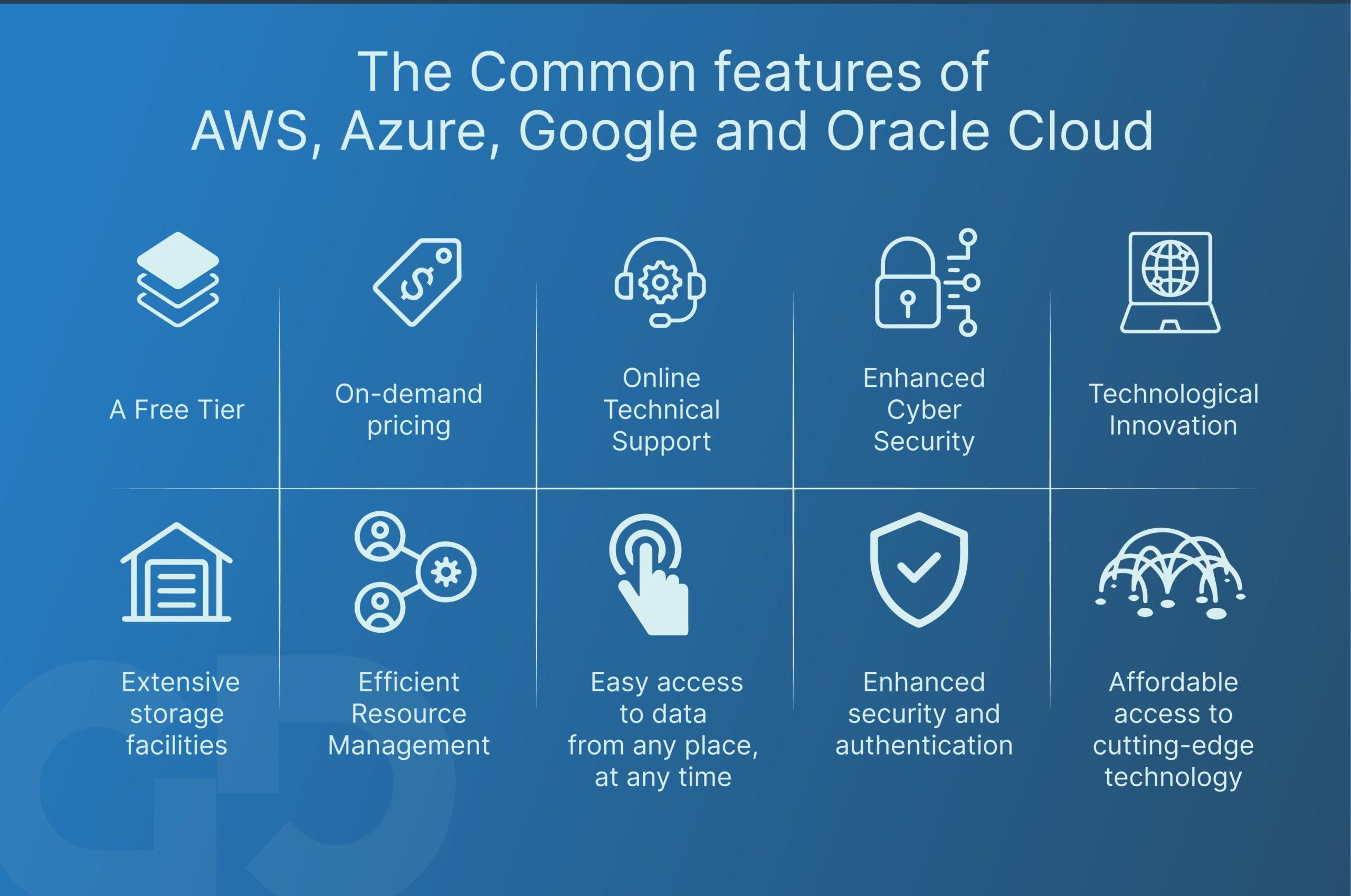

Where AWS is Strong – (Pros)
When it comes to Iaas and PaaS, AWS has the largest market share and leads in the vast majority of cloud products and services around the globe. A big reason for its popularity is undoubtedly the massive scope of its operations. AWS has a huge and growing array of available services, as well as the most comprehensive network of worldwide data centers. The Gartner report summed it up, saying, “AWS is the most mature, enterprise-ready provider, with the deepest capabilities for governing a large number of users and resources.”
The company has a strong managed service provider network, with 67 premier consulting partners worldwide. Enterprises perceive AWS as a strategic provider of cloud infrastructure. AWS delivers end-to-end solutions, starting from servers to embedded operating systems in Edge devices, and the comprehensive technological stack in between.
Where AWS is Weak – Cons
It is known that one of Amazon’s big weaknesses relates to cost. While AWS regularly lowers its prices, many enterprises find it difficult to understand the company’s cost structure and to manage those costs effectively when running a high volume of workloads on the service. At times Amazon has proclaimed price reductions, the price for some services, like the AWS Compute service, has not become cheaper since 2014. AWS optimizes their best cloud services, and if the customer is tied to the Amazon products, it may not be easy to switch to another service provider although the top 3 majors have made it easier to be friendly with each other in the past few years with cloud agnostic technology coming into favor.
AWS Benefits
Without a doubt, AWS is the most mature and enterprise-ready provider with a tremendous track record of customer success, starting from small and medium businesses to large enterprises. Enterprises using Amazon consistently benefit by being early adopters of new services. Amazon Web Services offers over 100 products that users can test for free. The company provides a set of database, developer and mobile tools and services that are always free. In addition, AWS offers a 1-year trial for certain products and short free trial services for ML, analytics, compute, security and compliance.
Microsoft Azure
Microsoft came later to the cloud market, but gave itself a jump start by essentially taking its on-premises software – Windows Server, Office, SQL Server, Sharepoint, Dynamics Active Directory, .Net, and others – and repurposing it for the cloud.
Microsoft Azure holds a strong second place after AWS. The company provides a broad range of enterprise-focused services. Every quarter Microsoft Azure releases tens of products, services and enhancements resulting from research and development initiatives, made over multiple years. Azure offers the ability to instantly provision computing resources on-demand and is the best-in-class in the hybrid cloud among other cloud vendors.
Microsoft Azure’s market share among IaaS cloud providers is 20%. In Q2 2021, Microsoft Azure’s revenue reached 50% growth when compared to the previous quarter, and resulted in $17 billion in earnings for the company. The accelerated demand for Microsoft Azure offerings has increased by 34% year over year, as stated in the company’s Q2 2021 financial report. Microsoft Enterprise Mobility (service including Microsoft products as Azure Active Directory, Endpoint Configuration Manager, Microsoft Intune, Microsoft Defender, etc.) grew 29% to 163 million seats in Q2 2021.
With over 600 services, Azure has a large layout of cloud offerings. Azure offers VMs as a part of its IaaS offering, Active Directory to synchronize on-premise directories, and enables single sign-on. The company also provides mobile engagement with real-time analytics and tracking of user behaviors and storage services, as well as data management tools such as Azure Data Explorer, Azure SQL Database, Serverless, CDN, Azure AI, Azure Workbench, Azure IoT and other services.
Where Microsoft Azure is Strong – Pros
A big reason for Azure’s success: so many enterprises deploy Windows and other Microsoft software. Because Azure is tightly integrated with these other applications, enterprises that use a lot of Microsoft software often find that it ]makes sense for them to use Azure. This builds loyalty for existing Microsoft customers. Also, if you are already an existing Microsoft enterprise customer, expect significant discounts on service contracts.
There are some good use cases for Azure due in part to the wide service offerings that Microsoft provides. Azure has partnerships with Oracle, VMware and SAP, further extending its capabilities. Microsoft Azure has a strong managed service provider network with 32 partners on its list. On top of that, Microsoft leads the PaaS segment of cloud service providers with a suite of tools, including Azure DevOps and Visual Studio Codespaces (the tool that enables the use of a public cloud and developer tools, such as Visual Studio Code).
Where Microsoft Azure is Weak – Cons
According to Gartner, there is fault with some of the platform’s imperfections. “While Microsoft Azure is an enterprise-ready platform, Gartner clients report that the service experience feels less enterprise-ready than they expected, given Microsoft’s long history as an enterprise vendor,” it said. “Customers cite issues with technical support, documentation, training, and breadth of the ISV partner ecosystem.” These are issues that Microsoft has been trying to improve upon nevertheless customers are still mentioning these issues.
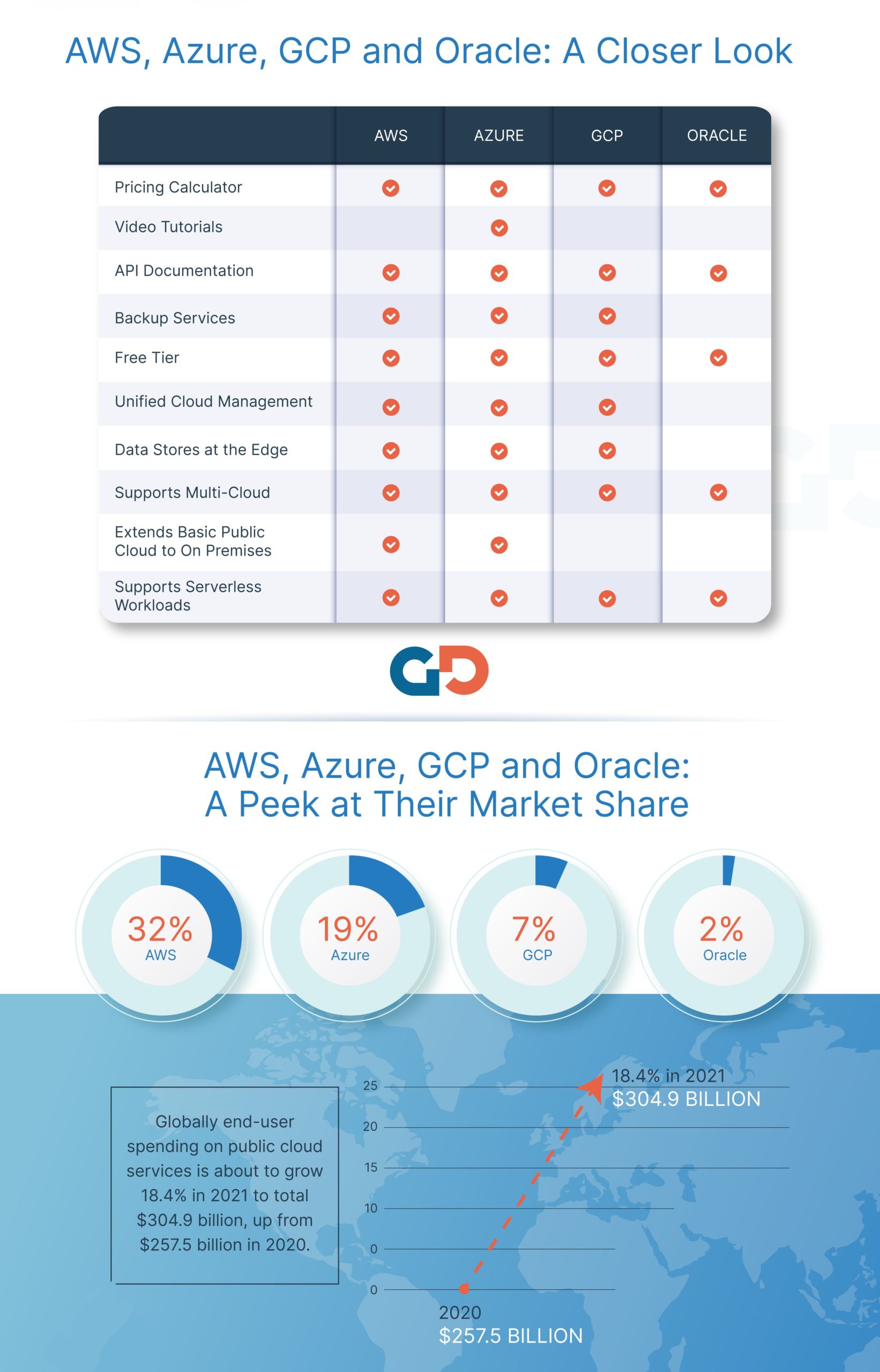

Microsoft support is quite expensive. In addition, Microsoft Azure has a lower ratio of availability zones than other cloud service providers. There’s still room for resilience-centered reengineering efforts and service availability improvements though. On top of that, Azure doesn’t provide any form of guaranteed capacity to its customers, and even pre-paid contracts and reserved instances are not capacity guarantees. During the COVID-19 spike, some Microsoft Azure customers were not able to provision the cloud capacity they had already paid for. There is where AWS outshined its competitors.
Azure Benefits
Azure is particularly well suited for organizations using Microsoft services. Microsoft Azure provides consistent services on the cloud and is a strong player in all use cases. This includes edge and comprehensive cloud offerings, in which other cloud vendors are not that well-versed. Microsoft Azure offers a $200 credit for 30 days to new users. As mentioned earlier, Azure offers the ability to instantly provision computing resources on-demand and is the best-in-class in the hybrid cloud among other cloud vendors.
Google Cloud Platform (GCP)
Google Cloud has third place on Gartner’s Magic Quadrant of cloud providers, after AWS and Microsoft Azure. In the last year, Google Cloud has substantially increased its hybrid and multi-cloud workload using Antos which allows users to manage workloads on Google, AWS and Azure. Besides, Firebase, a Google-purchased cloud mobile Backend-as-a-Service (BaaS), has grown quite rapidly and became widely adopted by developers. Firebase remains a highly-demanded BaaS platform despite it being run on the top of Google Cloud.
The market share of Google Cloud in infrastructure, as a service market, is 7%. In 2020 Google was investing heavily in sales staff, resulting in an operating loss of $5 billion and an overall $13 billion revenue. However, these steps were needed to scale the business and improve its profitability.
The Google Cloud platform offers 100 products that can be grouped into six categories: storage, databases, computing and hosting (servers, containers VMs), networking (VPC, load balancing, cloud DNS), big data (Big Query for data analysis, Dataflow for batch and streaming data processing), and machine learning (AI platform).
Where Google Cloud is strong – Pros
Google Cloud stands out in big data, machine learning and data science capabilities with its products like TensorFlow, ML Kit and Google Datasets. It offers an end-to-end AI platform built on the latest technologies and is enabled by tools like TensorFlow and TPUs (Tensor Processing Unit – an AI accelerator application-specific integrated circuit).
Google has a strong offering in containers since Google developed the Kubernetes standard that AWS and Azure now offer. GCP specializes in high compute offerings like Big Data, analytics, and machine learning. It also offers considerable scale and load balancing – Google knows data centers and fast response time.
Where Google Cloud is weak – Cons
Google has challenges with positioning itself as an enterprise-class IaaS solution. Its offerings have not yet reached the level of enterprise maturity that AWS and Microsoft Azure provide, and some of them are not yet as fully packaged as the ones offered by Google Cloud’s rivals. Likewise, Google Cloud has a smaller pool of well-versed managed service providers than other cloud vendors. Google is a distant third in market share, perhaps because it doesn’t have the traditional relationship with enterprise customers. However, it is quickly expanding both its offerings and its footprint of global data centers.
Gartner said that its “clients typically choose GCP as a secondary provider rather than a strategic provider, though GCP is increasingly chosen as a strategic alternative to AWS by customers whose businesses compete with Amazon, and that are more open-source-centric or DevOps-centric, and thus are less well-aligned to Microsoft Azure.”
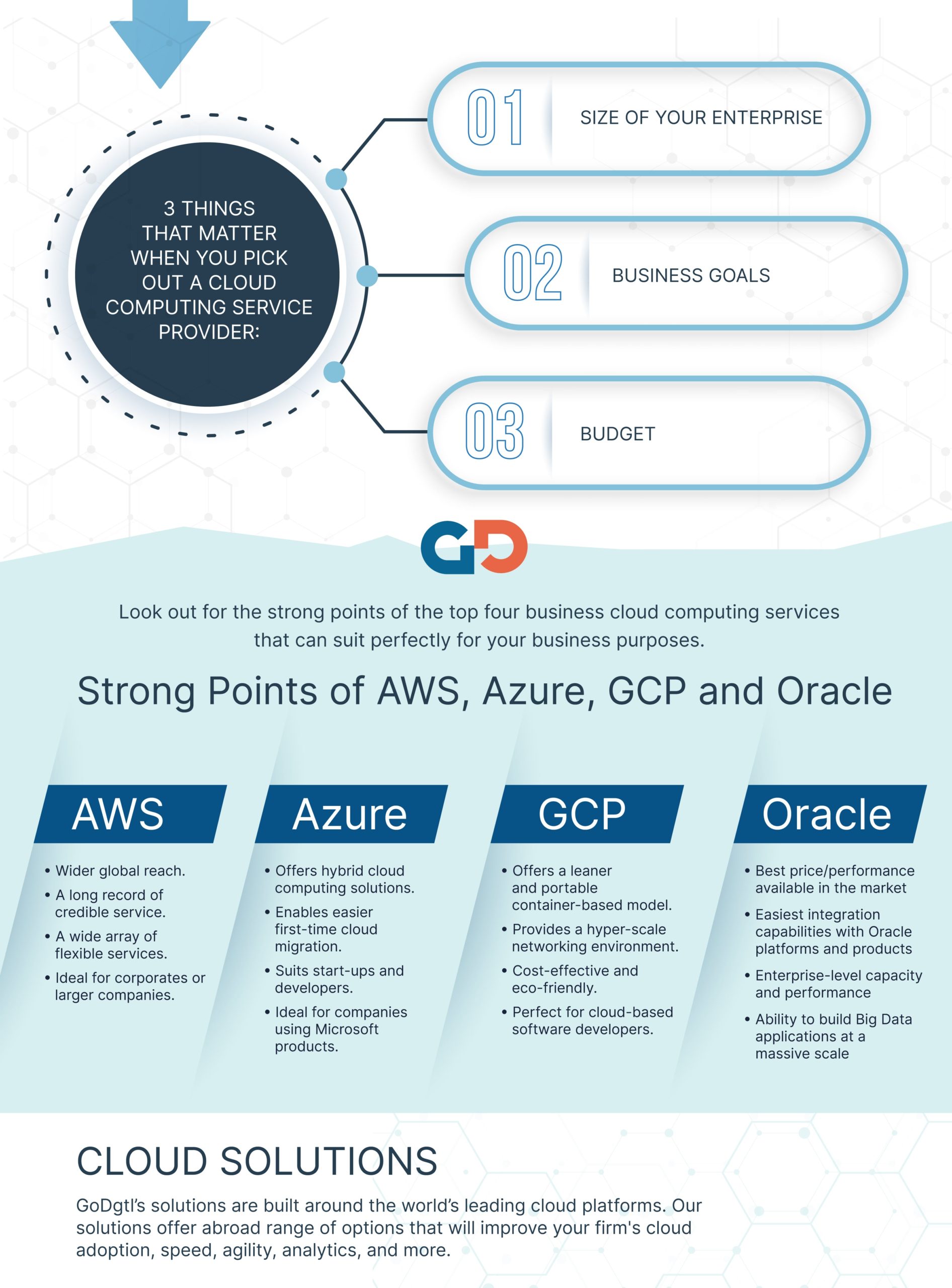

Google Cloud Benefits
Research shows that Google Cloud customers don’t need to be afraid of the vendor lock-in since the main Google offerings are open source (Kubernetes, TensorFlow and Istio) which eventually became industry standards. These services have significantly influenced the deployment, scaling and management of enterprise IT in the cloud. As the cloud industry and platforms evolve towards cloud agnostic offerings, Google is increasing, though slowly, its market footprint every year by convincing customers with its enterprise cloud offerings which are starting to stand up to industry standards in a convincing way.
Where Are the Trends Going into 2022?
According to predictions from Gartner, global spending on cloud services is expected to reach over $482 billion in 2022, up from $313 billion in 2020. Cloud computing infrastructure is the backbone of the delivery pipeline of just about every digital service, from social media and streaming entertainment to connected cars and autonomous internet of things (IoT) infrastructure. New or upcoming ultra-fast networks like 5G and Wi-Fi 6E don’t just mean more data will be streamed from the cloud; they mean new types of data can be streamed.
The pandemic brought about an explosion in cloud usage for employee remote services and those trends will continue to evolve and enterprise migrations will become more focused and projects will begin to use hybrid cloud. The distinction between public and private cloud will become less as options for ‘best of both worlds’ start to become frequent offerings.
How GoDgtl Partners with AWS, Azure, and Google Cloud Services
GoDgtl brings a team of experienced cloud experts who work directly with AWS, Azure, and Google to bring value and real solutions for your cloud projects. With direct access to resources and in-house cloud consulting talent, GoDgtl is ready to guide you through your cloud (security) journey regardless of where you are on that path. Whether it’s more knowledge-based information on cloud topics such as security, or governance and compliance or basic cloud migration aspects or even if an assessment is needed, GoDgtl can provide a roadmap for your path to project completion and success.
Sources:
https://www.avenga.com/magazine/top-cloud-service-providers/
https://www.datamation.com/cloud/aws-vs-azure-vs-google-cloud/
Recent Posts
February, 2022
The transformation seen in the cloud for financial services has been nothing short of phenomenal especially during the last few years. Then when the pandemic hit, cloud services were in such demand that many financial institutions were impressed with the ease with which their workforce was easily able to transition to remote office work without too many hiccups as an “underlying digital transformation” had begun years ago to help modernize the workplace.
Beyond the obvious Zoom meetings and collaboration tools flooding the market both before and during the pandemic, it was obvious that a trend towards greater reliance on cloud basedservices was underway in the financial world. These shifts were seen as advantages from the past where the big banks were at first reluctant to take the big leap into cloud, whereas now are being public about their adoption of cloud tech. For many big banks, it was a question of staying competitive and relevant in an area that has long been reluctant to any rapid changes in procedures and manners of handling sensitive customer data. The notion of putting sensitive information into a product that few were familiar with until cloud technology spread through the workforce at all levels made many in the C-suite nervous about security protocols and relied heavily on outside consultants and their internal IT security experts to educate, innovate, and manage the process of ensuring data security and privacy at all costs.
Flexibility Allows Scalability
The times have changed. Enterprise migration into the cloud has made it easier for large and small fintech firms as well as large traditional banks and other finserv institutions to streamline their workflows and innovate faster and in more seamless ways than before. The implications have been nothing short of impressive and in some cases mind boggling. According to Bloomberg, cloud adoption though in it’s early stages is still happening at a fairly robust rate, as 22% of ALL applications are now run on the cloud with more room to grow. According to the IDG Cloud Computing Study (2020), almost 55% of all financial firms and fintech companies are using multiple public clouds.
Fintechs are often rapidly growing platforms. This means they need an infrastructure that can grow with them and not put up unnecessary barriers or create challenges where there needn’t be any. Cloud technology provides the agility to scale relatively easily while saving on on-premises technology infrastructure, which can be more costly to upgrade. Even for traditional banking structures, the cloud platform delivers the capacity to adapt to branch closures while still providing services to as many people as possible. Moving infrastructure to the cloud measures accessibility, flexibility, and scalability for both fintechs and financial giants.
Another stunning figure is that these companies are dedicating 32% of their IT budgets to cloud migration and other cloud related services. It’s easy to see why this sector is finally running along with other industries in being cloud savvy. Moving to the cloud is allowing for more agile applications, more growth, more scalability and along with all that comes innovation.
Innovation
As mentioned in Bloomberg: Increasingly, businesses are developing innovations that wouldn’t necessarily be possible without the cloud: enabling fintechs to get up and running faster and offer individualized services, which has encouraged a revolution in financial services. This shift is undoubtedly broadening the competitive landscape. Many also say that agility is a major reason for seeing movement to the cloud.
Companies can now harness the resources as needed which allows for more development of applications in quicker more nimble and secure environments. As of late, even large banks are moving at a more rapid pace and sharing data like startups in the industry. Since cloud technology offers companies more options with less risk, as well as more experimentation and invention on behalf of customers, it’s possible to explore alternative data sets and spend time and capital on proprietary analysis.
New Security & Privacy Options
Despite early concerns about security and data protection, the cloud has proved reasonably secure if the right measures are taken. Zero-trust verification and encrypted data have increased cloud security in recent years. When used alongside measures such as employee education and access control, among others, the cloud proves itself no riskier than traditional IT infrastructure setups. For fintech providers, no doubt, security is at the forefront of their minds when adopting new technology, and it’s vital they ensure their systems have adequate measures in place. The financial services sector has a responsibility to safeguard the data of its customers and the cloud is enhancing the way financial businesses do this. From data encryption to zero trust verification and access control, many of the risks that traditional on-premises IT infrastructures present are being mitigated through cloud computing in financial services.
According to Bloomberg “As migrating data, storing data, and using additional services like machine learning on the cloud becomes more ubiquitous, there’s a clear and demonstrated need for organizational oversight. Many of the tools needed to keep data confidential and secure are readily available within public clouds, enabling firms to take advantage of better security than what is available on their local servers, if they plan appropriately.”


Data Management
Acquiring and working with data is a top priority, from onboarding and identity verification processes to account management, balance, checking, analyzing spending habits, etc. Data is key. Companies can use cloud technology to gather and store large quantities of data securely and make it accessible at any time. That means there’s no need to wait for an IT specialist to clock in to access vital information, providing an employee has the correct credentials. This can be done from anywhere at any time and often automatically.
Best Practices For Cloud Adoption In Finance
Working with more documentation and creating, storing and sharing a great amount of financial information make cloud adoption in banking and fintech specific. Here are the things to consider:
- Encryption and access control: Discuss encryption policies and procedures with your provider to select the technically feasible ones and properly protect the financial data you transmit.
- Compliance: Finance executives need to ask providers to demonstrate compliance certificates of the cloud service.
- Data segregation and data management: Cloud services thrive on shared resources, though financial institutions may require a combo of shared resource benefits with the increased security reached by data segregation.
- Disaster recovery plan: Reputable service providers always have it in place, and it’s important to obtain a detailed disaster recovery plan and ensure your digital infrastructure allows all that.
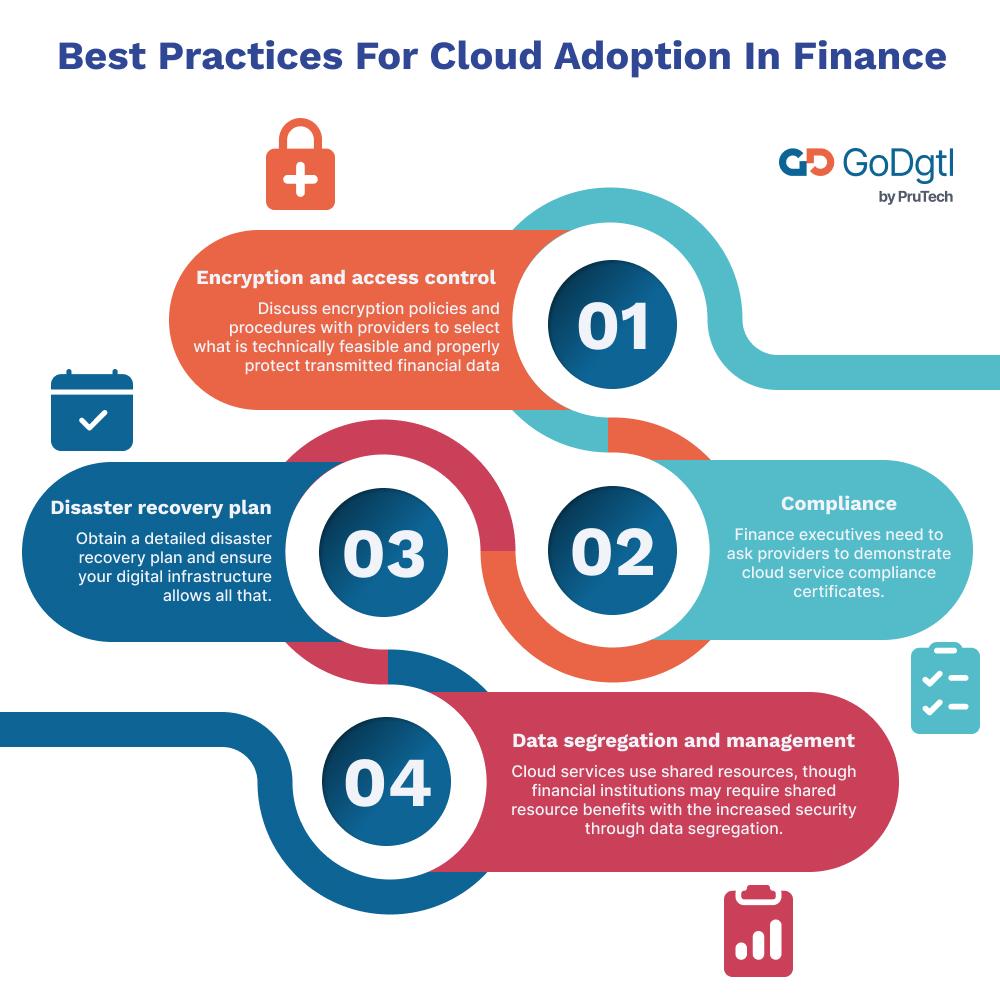

How GoDgtl Partners with the major cloud providers AWS, Azure, and Google
GoDgtl brings a team of experienced cloud experts who work directly with AWS, Azure, and Google to bring value and real solutions for your cloud projects. With direct access to resources and in house cloud consulting talent, GoDgtl is ready to guide you through your financial/fintech cloud journey regardless of where you are on that path. Whether it’s more knowledge-based information on cloud topics such as security, or governance and compliance or basic cloud migration aspects or even if an assessment is needed, GoDgtl can provide a roadmap for your path to project completion and success.
Sources:
https://www.pwc.com/us/en/industries/financial-services/cloud.html
https://www.telehouse.net/blog/the-impact-of-cloud-computing-in-fintech/
Recent Posts
December, 2021
The adoption of IoT (Internet of Things) has rapidly changed today’s business world. IoT predominantly helps to capture vast volumes of data from multiple sources. However, the processes of collecting, processing, and analyzing the tremendous flow of data from countless IoT devices have turned complex.
The data-driven nature of present-day businesses requires investments in innovative technologies that can turn this complex process into a simplified yet easily comprehensible one. This is the point where the convergence of IoT and Artificial Intelligence (AI) or AIoT can play a major role in redefining how businesses and economies work.
While IoT comprises devices interacting over the internet, the Machine Learning (ML) capabilities of AI make IoT devices learn from the data they collect. AI-enabled intelligent IoT devices can simulate smart human (at times, superhuman) behavior and decision-making patterns with little or no human interference.
The Rising Trend of IoT and AI Convergence
As a prominent part of their business processes, several businesses worldwide have already embraced the combination of IoT and AI. A 2019 survey reveals that respondents that heavily use AI in their IoT operations exceeded their value expectations. Similarly, a PwC 2019 IoT survey shows that 97% of the companies that have integrated IoT with other technologies such as AI and Blockchain were able to reap the benefits through this investment.
Start-ups and large enterprises alike prefer AI technology to bring out the full potential of IoT. The major leading providers of IoT platforms like Oracle, Amazon, and Microsoft have begun incorporating AI technology into their IoT applications already.
From robotics, self-driving cars and advanced analytics to Industry 4.0 Digital Twins and smart IoT devices, AI-powered IoT is increasingly becoming important across a range of business areas. As a matter of fact, the next evolutionary step for IoT is to embrace AI and drive intelligent automation and decision-making.
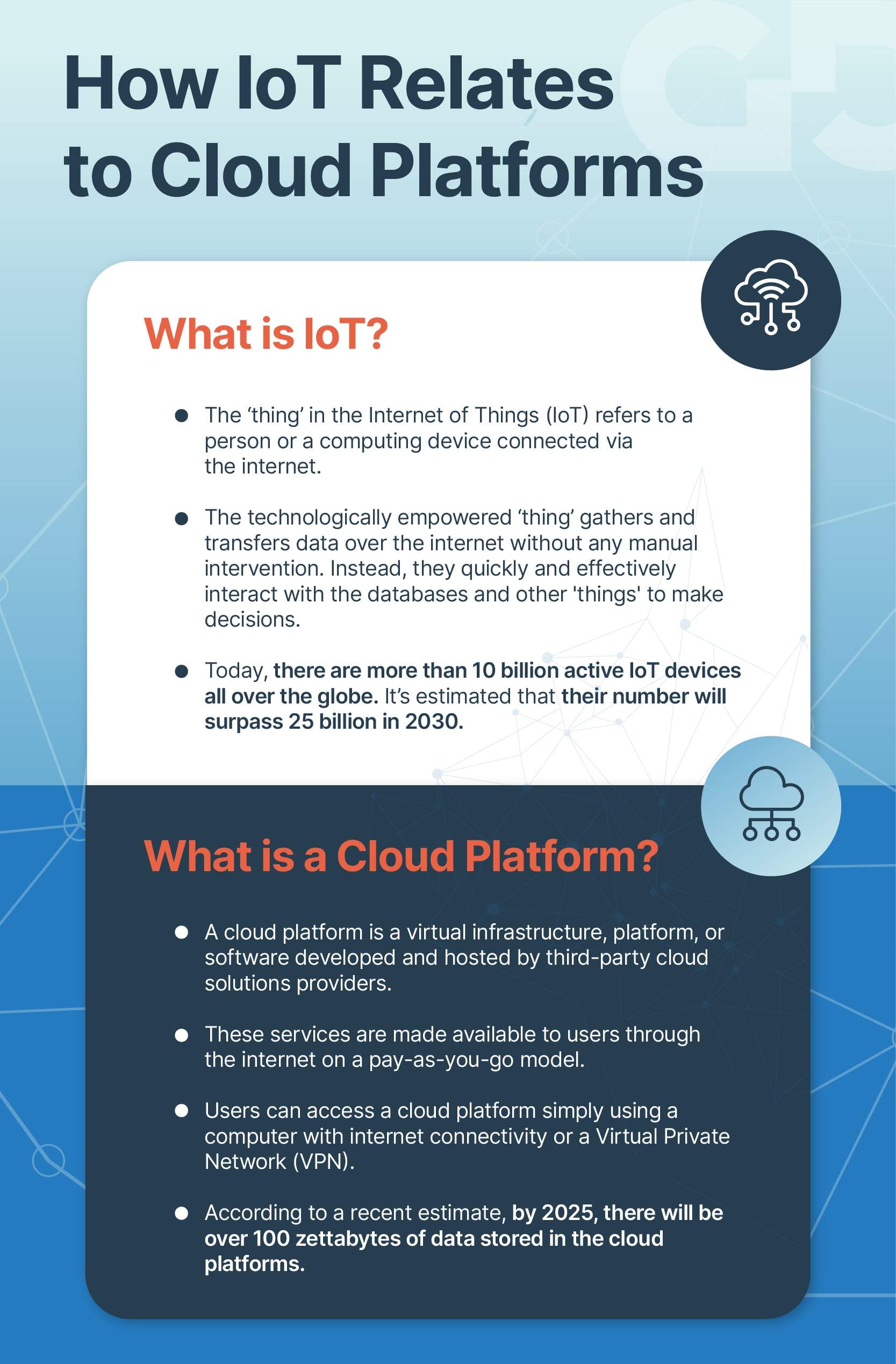
How the Blend of IoT and AI Works
At its heart, IoT is all about machines with sensors implanted. These machines, over internet connectivity, transmit streams of data. All IoT devices inevitably follow five basic steps. They are:
- Create
- Communicate
- Aggregate
- Analyze
- Act
The ‘Act’ step solely depends on the ‘Analysis’ step that immediately precedes it. Therefore, the efficiency of an IoT device is determined by its Analysis step. This is the point where AI technology portrays a significant role. While IoT devices provide a multitude of data, AI offers both creativity and context to make smart actions. Therefore, businesses can make smart decisions when an unlimited stream of data delivered by IoT devices is analyzed by AI technology.
Surprising Benefits of AI-Powered IoT
Combining two disruptive technologies like AI and IoT brings a broader range of benefits for both businesses and consumers alike. Some of the most popular benefits are as follows:
Enhanced Efficiency in Enterprise Operations
ML capabilities of AI can crunch huge volumes of data from IoT devices and detect patterns that can’t be done with simple computing devices. It can also predict the enterprise operation conditions and bring solutions for ideal outcomes. Therefore, redundant and time-consuming business tasks are eliminated.
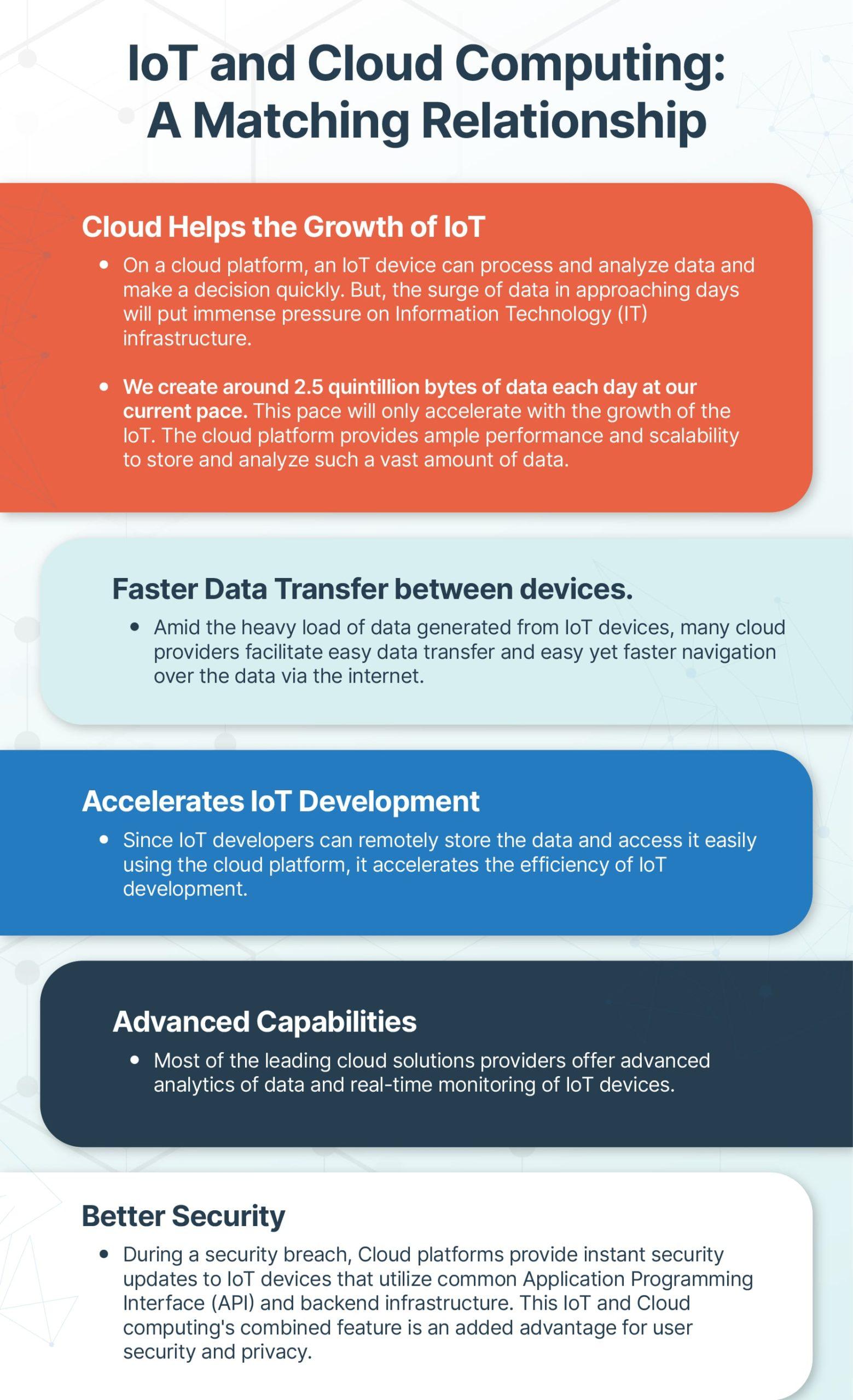

An Efficient Risk Management System
AI-Powered IoT helps businesses analyze and predict a broader set of risks and automate timely responses. It ensures efficient handling of financial loss, employee safety, and cyber-attacks.
Brings Out Innovative Products And Services
A prominent AI technology like Natural Language Processing (NLP) is getting better at letting people communicate easily with computing devices. This leads to the creation of innovative products and services yet enhances the existing ones.
Enhanced Scalability
The AI-powered IoT ecosystem analyzes and crunches the data from devices ranging from smartphones to high-end computing devices to low-end sensors. This process can make large volumes of data handy and make it easier to share across a larger network of IoT devices.
Eliminates Unpredictable Yet Expensive Downtime
In some industrial sectors like offshore oil and gas, as well as industrial manufacturing, unpredictable equipment failures can bring expensive downtime. AI-enabled IoT allows you to predict equipment breakdowns and schedule timely maintenance procedures.
Generally, IoT combined with AI technology can lead the path towards an advanced level of business solutions and user experiences. To achieve greater value from your enterprise network and to transform your business, you should undeniably integrate AI with IoT devices.
Recent Posts
December, 2021
For running a business safely and securely in the cloud, you have to comply with a certain set of rules. This set of rules or policies that govern your business in the cloud environment are referred to as cloud governance. Typically, these policies share many similarities with those governing on-premise IT infrastructures.
These rules are focused on enhancing privacy, data security, and managing risks in order to secure the data and ensure the smooth operation of the application. In addition to enhancing and optimizing security and efficiency, cloud governance best practices also help economize a business’ finances by allowing it to do more with less usage of resources.
Is Changing Your Current Governance Strategy Necessary?
Since every IT business has governance protocols and strategies, you might be wondering: why must I change my existing governance framework? Is it inadequate to handle problems raised by shifting to a cloud environment?
Well, the shorter version of that answer is, Yes. That is because the traditional IT governance framework is based on using centralized tools custom-made for workers of specific departments. Although this approach is best suited for centralized tools, the cloud environment and its operations by nature are decentralized.
A cloud governance strategy allows for creating a standardized policy that can be followed by various employees and departments of the business irrespective of their roles or subdivisions.
This strategy enables every employee to share and be on an equal footing while working in the cloud environment. The cloud, like enterprise infrastructure, needs bodies that govern its environment and standardize its services and other shared infrastructure issues.
Five Pillars of Cloud Governance
The efficiency of cloud installation is definitely dependent upon the organization’s systems and procedures. However, they also impact the structure of their platform and its underlying architecture. Based on the following five pillars, one can effectively implement designs that ensure scalability.
Operational Excellence
This pillar focuses on your workload operating as desired, monitoring every process and system to yield higher business value and continuously improve them. To ensure that your workload runs effectively with governance principles, operations will have to be performed as per code, incremental development of applications, and continuous refinement of processes involved.
Reliability
Reliability focuses on ensuring that your application performs as desired and that it does so continually without encountering a complete failure. Even the most reliable applications encounter failures, but they can recover quickly to meet customer demand. This is because their workloads are distributed, and the only resources they utilize are the ones that are required for production workloads.
Performance Efficiency
Performance efficiency is all about using technical resources efficiently for increasing business returns and operational efficiency. An example of such can be the usage of serverless platforms for app deployment. You can also deploy your workload across a vast region so customers accessing it globally can experience quicker interaction.
Security
This fourth pillar focuses on protecting the confidential information, data, and systems of your business. It urges you to secure your applications by implementing strong identification protocols and access controls
Cost Optimization
The last focuses on optimizing and reducing the operational and up-front costs of cloud development for your business, along with a monitored and streamlined usage of resources. It recommends that you focus on core development activities while outsourcing all the ancillary services to a third-party vendor to reduce the time taken for development and corresponding costs.
To learn more about each pillar in detail, download our whitepaper here.
Cloud Security Governance Challenges
Following are some of the practical use cases of cloud governance strategies and how they help tackle governance challenges.
Safeguarding Against Eventualities
When a business avails cloud services from a vendor, it is the responsibility of the service provider to provide continuous and reliable services. It is also their responsibility to enhance said services. If the vendor’s service goes down, so will be the performance of the client. Having a proper cloud governance model in place helps avoid such situations.
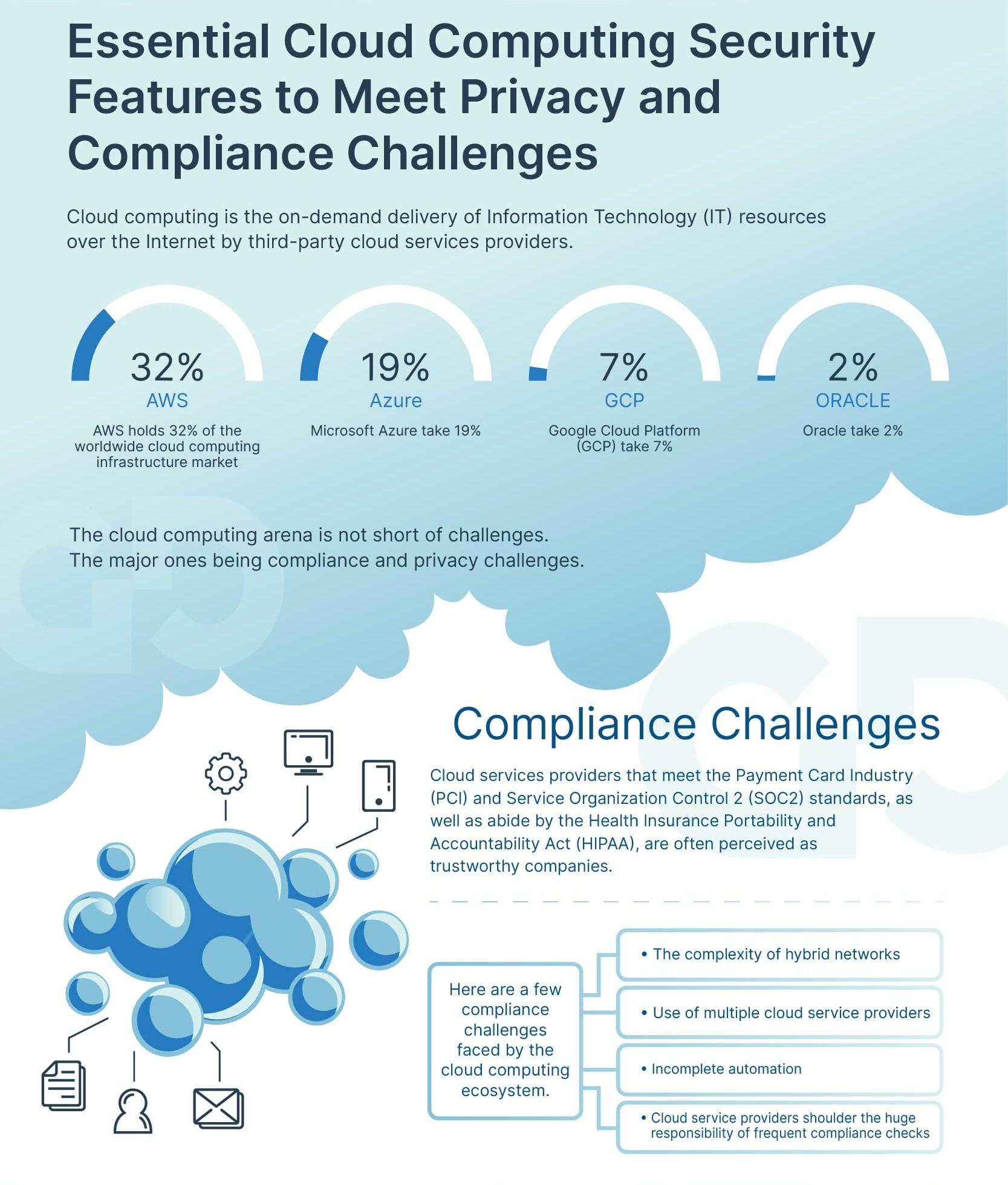
Cost-Effectiveness
Cloud development is an extremely cost-effective approach to application making, and with the right governance policies in place, the business can reap huge profits. A well-optimized cloud governance model can run far more efficient financial analytics and yield an optimal way of automating these policies. It can also retain management reporting to help with cost management.
Data Security
Securing your data is one of the top priorities of any IT business, and a well-planned cloud strategy can secure you against hackers exploiting loopholes. Cloud governance policies and best practices dictate that you build a robust authenticating system to safeguard your confidential information. The reason behind such a strict rule is that cloud service providers such as AWS have many inherent security bugs.
At GoDgtl, we help businesses establish robust cloud governance frameworks for hybrid, cloud, and multi-cloud environments, enabling companies to maintain compliance, democratize data, and support collaboration.
Get in touch with our data modernization team to learn more about how we can help your company build a solid data governance framework.
Recent Posts
December, 2021
Security is one of the top priorities for any organization that relies on digital technologies. And when it comes to the cloud, having a well-thought-out security strategy is absolutely essential. While the on-prem IT infrastructure focuses primarily on perimeter security, the security parameters for a cloud framework vary vastly from the former, and they require a rather layered approach.
As a market leader in cloud solutions, Microsoft Azure offers many out-of-the-box comprehensive security features that ensure multi-layered security of workloads hosted on its platform. Microsoft Azure puts a primary focus on customer facing controls that can be used to customize and increase security of applications and services.
Azure offers services such as virtual computing, cloud storage, analytics, and a lot more. It is a faster, more agile, and reliable replacement or supplement for your On-premise servers.
How do Azure security features work?
Since Azure’s Cloud Security infrastructure works on a shared security model, ensuring security on the cloud platform is a shared responsibility between Azure and the customer. In the case of on-prem solutions, customers bear the entire burden of ensuring security.
Here’s how the responsibility of different models is shared between Azure and customers:
- For IaaS, Azure ensures the security of networks, hosts, and data centers.
- For PaaS, along with what Azure ensures for IaaS, it also takes over the responsibility of ensuring the operating system’s security.
- For SaaS, along with what Azure ensures for PaaS, it also takes over the responsibility of ensuring the security for network controls, and applications.


While Azure takes up more responsibility for security from IaaS to SaaS, the onus of responsibility for the following three aspects falls on the customers:
- Data Governance and Rights Management
- Account and Access Management
- Endpoint Protection
How Microsoft Azure Ensures Your Organization’s Security
Here are the top six cloud security best practices that Microsoft Azure provides to enterprises for deploying workloads on their platform.
Identity Management
In the world of the cloud, identity is a relatively new security parameter. It provides a minimum level of access for just the right duration of time necessary to perform a particular activity. On the same operational principle of “least privilege,” Azure’s Identity Management service provides granular access control for your resources.
You can either make use of built-in roles that will define the access granted to a resource or custom-make roles as per the requirements of your organization. You should also make use of Azure’s Multi-Factor Authentication (MFA) for an additional layer of security.
Perimeter Security
Azure provides multiple out-of-the-box and third-party security services that offer perimeter security. Its threat intelligence-empowered firewall blocks out any traffic coming from known malicious sources. By default, all Azure resources come with a basic DDoS protection plan.
Data Protection
Azure offers auto-enabled server-side data encryption features for most of its services. The encryption uses 256-bit AES block ciphers, and its keys are stored and managed either by the customer or by Microsoft, as per the business requirements.
Security Center
Azure’s Security Center continuously monitors cloud deployments, provides threat prevention suggestions, and alerts you to any deviation from the predefined security best practices. Since this service is integrated with Azure resources, it also reduces the company overheads.
Key Vaults
As mentioned above, Microsoft provides Key Vaults for storing and accessing your cryptographic keys. You can also use these vaults for securing passwords, certificates, etc. The vaults are so safe and secure that even Microsoft cannot extract the data stored inside. This service allows developers to access security credentials or DB connection strings to the code directly from Key Vault.
Logs
The activity logs can offer insights into the provisioning, modification, and/or deletion of resources. You can send the data from these activity logs to Azure’s tools like Event Hubs for further analysis. Using pre-defined or tailored queries on these logs, the Log Analytics workspace gathers actionable intelligence.
Based on this intel, the outcome can provide a security status of your environments. For user access patterns, Azure AD logs are also a very useful service. It flags any unusual behavior as a potentially compromised identity.
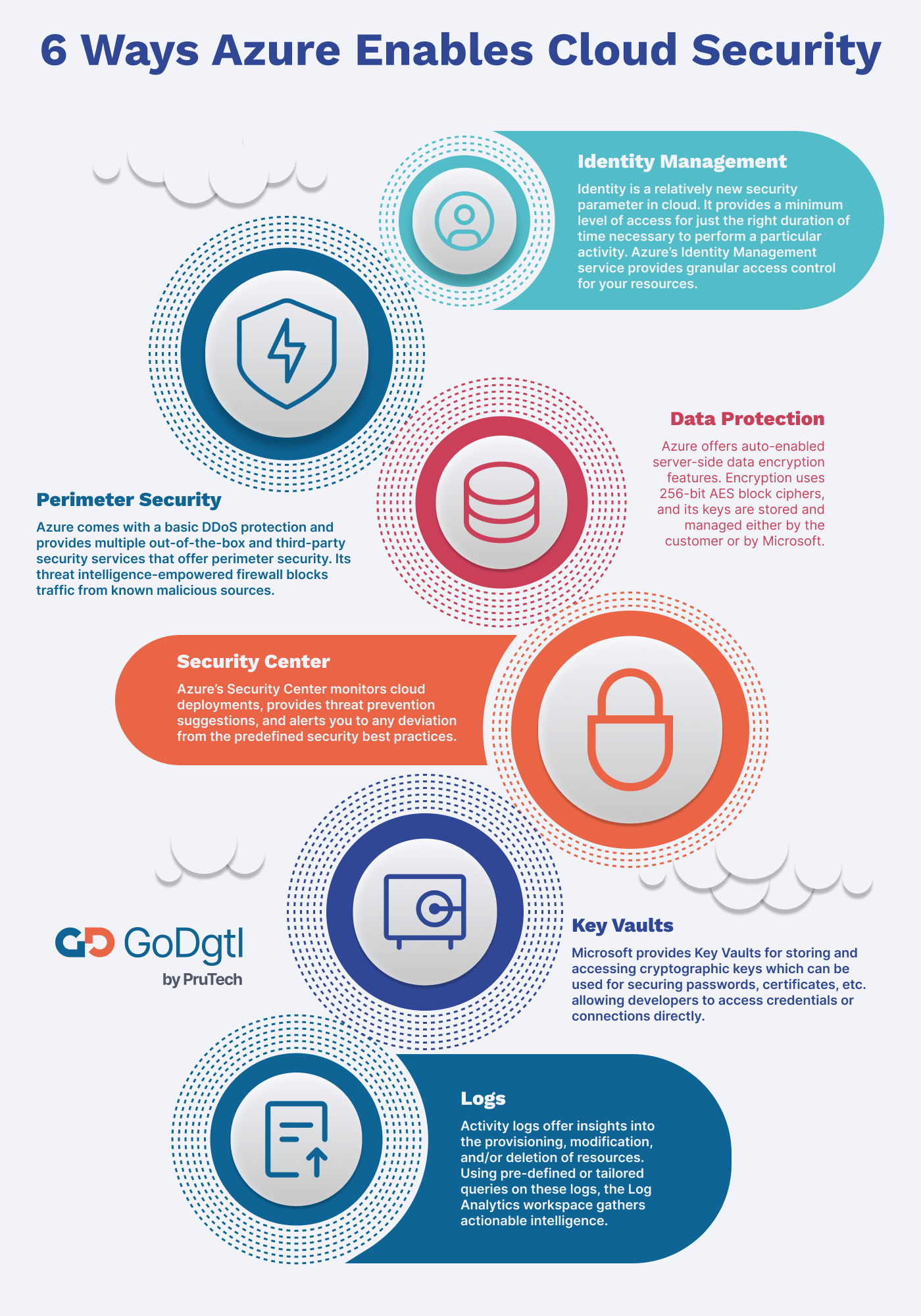
Move to a Secure Azure Cloud Environment with GoDgtl
At GoDgtl, we understand how cloud computing and the resulting benefits of flexibility, scalability, security, and agility can transform organizations. Through our alliances with AWS & Azure for cloud or multi-cloud solutions, we provide broad and extensive cloud platform capabilities to empower digital business transformation for our global clients.
Recent Posts
November, 2021








